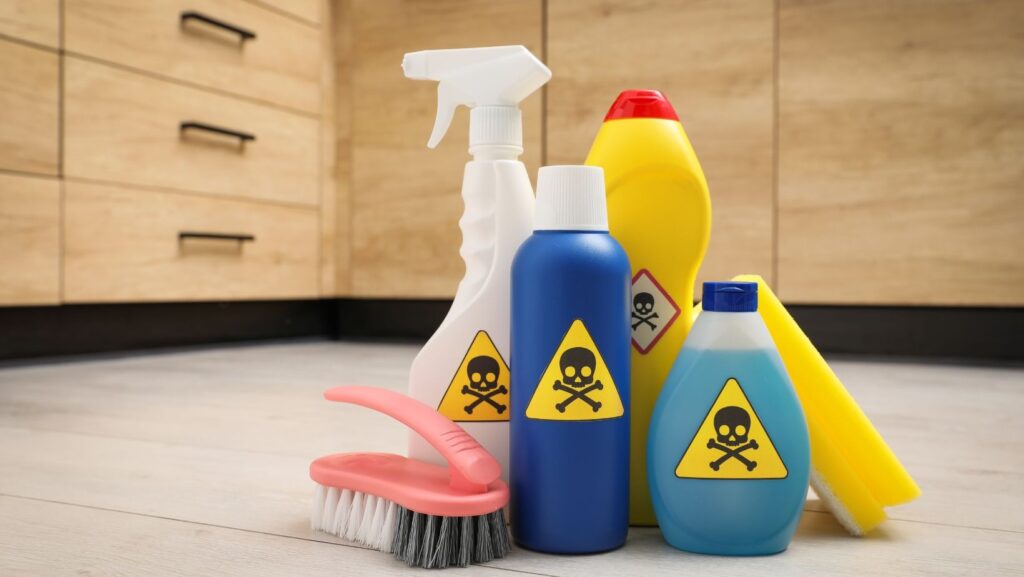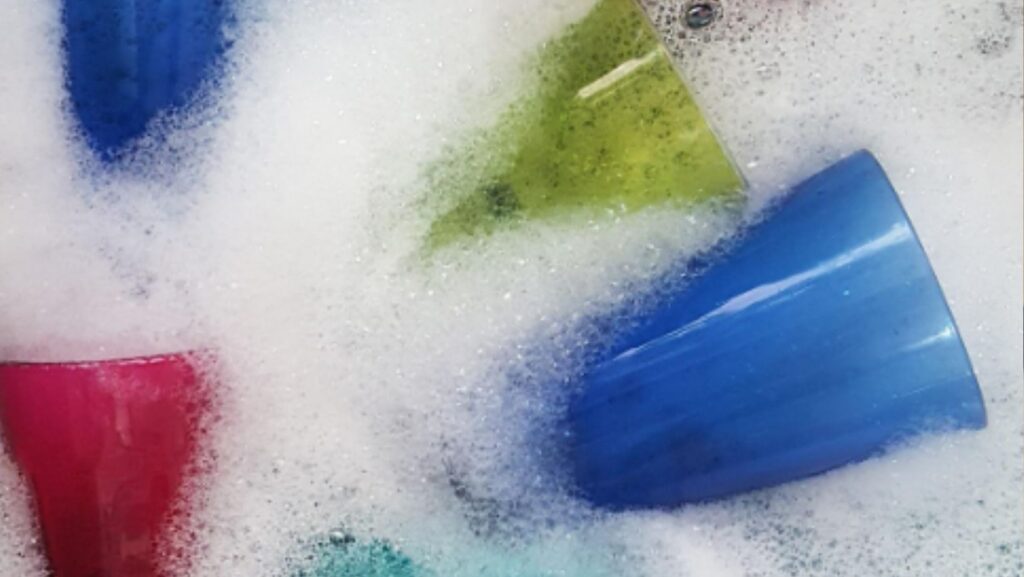When you rinse a plastic container down the sink or toss a worn-out non-stick pan in the trash, those items don’t simply disappear. The chemicals they contain begin a journey that ends up contaminating waterways, poisoning wildlife, and disrupting ecosystems thousands of miles from your kitchen.
Most people assume that what happens in their kitchen stays in their kitchen. This couldn’t be further from the truth. Every chemical-laden product we use in food preparation and cleanup eventually makes its way into the broader environment, creating pollution problems that affect conservation efforts worldwide.
Understanding this connection between our daily kitchen choices and environmental health is crucial for anyone who cares about protecting the natural world. The good news is that by making informed decisions about the products we bring into our homes, we can significantly reduce our contribution to environmental contamination.
How Kitchen Chemicals Escape Into the Environment
The path from your kitchen to the environment happens through multiple routes, most of which are invisible to consumers. Every time you wash dishes, rinse containers, or dispose of kitchen products, chemicals enter wastewater systems that weren’t designed to filter out many synthetic compounds.
Municipal water treatment plants can remove some contaminants, but they struggle with persistent chemicals found in modern kitchen products. These substances pass through treatment facilities and flow directly into rivers, lakes, and coastal waters. Once in aquatic systems, they accumulate in sediments and work their way up the food chain.
Soil contamination occurs through several pathways as well. Sewage sludge containing kitchen chemicals is often applied to farmland as fertilizer. Landfills leak chemicals from disposed kitchen items into groundwater. Even the air in our homes carries volatile compounds from kitchen products that eventually settle onto soil and water surfaces far from their original source.
The Worst Offenders in Your Kitchen
Toxic Drinkware and Storage Containers
Plastic containers and drinkware represent one of the most significant sources of kitchen-related environmental contamination. Conventional plastic tumblers and food storage containers leach chemicals like BPA and phthalates into both food and the environment. When these items are washed or disposed of, these chemicals enter water systems where they disrupt the hormone systems of fish and other aquatic life.
The environmental benefits of choosing non toxic tumblers made from glass, stainless steel, or certified safe materials extend far beyond personal health. These alternatives don’t leach harmful chemicals during use or disposal, reducing the overall chemical load entering our ecosystems. They also last much longer than plastic alternatives, reducing the frequency of replacement and associated manufacturing impacts.
Microplastics from degrading plastic drinkware create additional environmental problems. These tiny particles are now found in the most remote ocean locations and inside the digestive systems of marine animals, from tiny plankton to large whales.
Non-Stick Cookware and Forever Chemicals
Non-stick pans and bakeware contain PFAS chemicals that have earned the nickname “forever chemicals” because they never break down naturally. These substances accumulate in the environment indefinitely, building up in wildlife tissues and contaminating drinking water sources.
PFAS contamination has now been detected in every corner of the globe, from Arctic ice to rainwater in remote forests. The widespread use of non-stick cookware in homes worldwide has contributed significantly to this global pollution problem.
Cleaning Products That Don’t Stay Clean
Kitchen cleaning products and detergents introduce additional chemicals into water systems every day. Surfactants designed to cut grease can persist in aquatic environments, while antimicrobial agents disrupt beneficial bacteria that form the foundation of healthy ecosystems.
The packaging from these products adds another layer of environmental impact, as plastic bottles and chemical residues end up in landfills where they can leach into groundwater for decades.
Impact on Wildlife and Ecosystems
The chemicals from kitchen products are causing measurable harm to wildlife populations. Aquatic animals are particularly vulnerable, with researchers documenting hormone disruption, developmental abnormalities, and reproductive problems in fish and amphibians exposed to common kitchen chemicals.
These effects ripple through entire food webs. When small fish suffer from chemical exposure, the birds and larger fish that depend on them for food also face contamination. The accumulation of chemicals through the food chain means that top predators often carry the highest concentrations of kitchen-derived pollutants.
Terrestrial ecosystems face similar challenges. Soil organisms that break down organic matter and maintain soil health are being damaged by chemical contamination. This affects plant growth, which in turn impacts the insects, birds, and mammals that depend on healthy plant communities.
Better Choices for Your Kitchen and the Planet
Making safer choices doesn’t require sacrificing convenience or functionality. Glass and stainless steel containers offer excellent alternatives to plastic storage options. They’re durable, don’t absorb odors or stains, and won’t leach chemicals into your food or the environment.
For cleaning, plant-based products that biodegrade quickly cause far less environmental harm than conventional cleaners. Many effective cleaning solutions can be made at home using simple ingredients like vinegar, baking soda, and castile soap.
Cast iron, carbon steel, and ceramic cookware provide excellent cooking performance without the environmental costs of non-stick coatings. These materials improve with use and can last for generations with proper care.
Making the Change
Start by replacing the items you use most frequently. A good strategy is to upgrade one category at a time rather than trying to overhaul your entire kitchen at once. Focus on products that come into direct contact with food and water, as these have the most immediate environmental impact.

When shopping for replacements, look for products made from natural materials or those certified by environmental organizations. Support companies that are transparent about their ingredients and manufacturing processes.
Your Kitchen’s Role in Conservation
Every decision you make in your kitchen sends ripples through the environment. By choosing products that don’t contribute to chemical pollution, you’re directly supporting the health of waterways, soil, and wildlife that conservationists work so hard to protect.
These individual choices, multiplied across millions of households, create the market demand needed to drive systemic change in how kitchen products are designed and manufactured. Your kitchen can become a powerful tool for environmental protection, one product replacement at a time.

